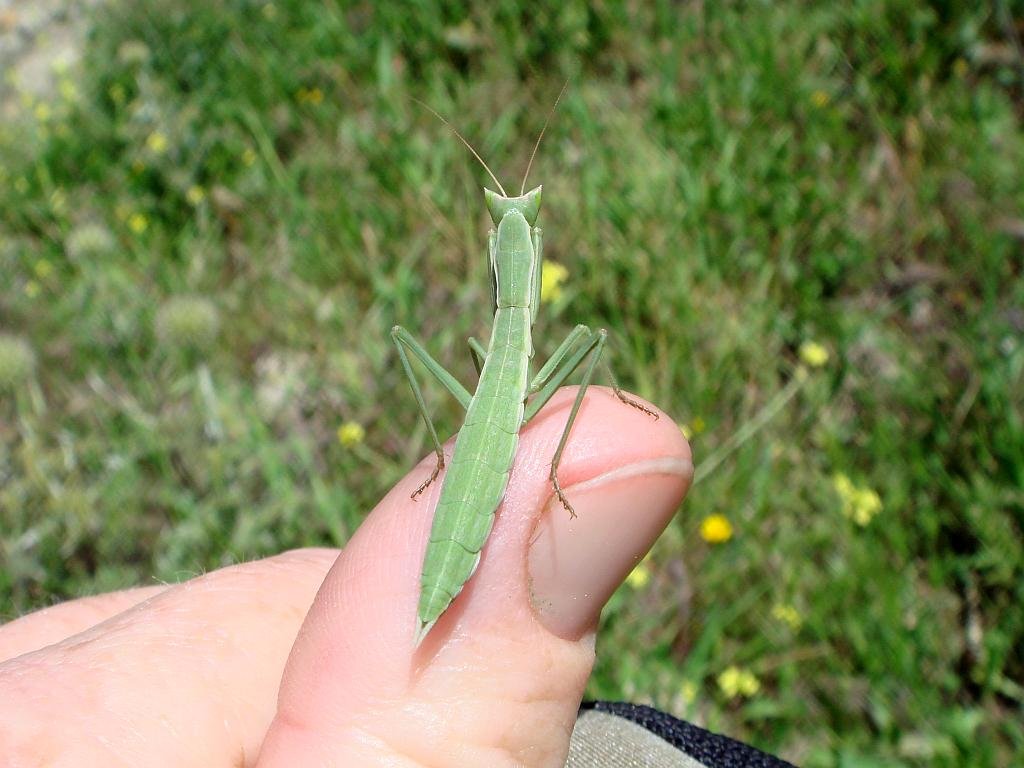This a species of praying mantis which is endemic to the Iberian peninsular first described by José María Hugo de la Fuente Morales in 1894.
In the past, there were few areas known where it existed in Spain so it was considered rare and previously catalogued on the red list of the IUCN endangered species as “vulnerable”.
This species may be brown, grey or green in colour. They can be easily distinguished from other mantids by the very angular eyes that taper to (upward and outwards facing) points. The nymphs hide low down in grasses and jump with agility, making them difficult to tell apart from small grasshoppers.

Previously, the areas where it is known to live were Pozuelo de Calatrava (Ciudad Real), Madrid, Cuenca, Extremadura, Jaén and Granada. They were also discovered in 2001 at Jerez de la Frontera (Cádiz).
It may well have been that rather than being rare it was simply over looked as it has an uncanny ability to blend into the surroundings.
We at Wildside Holidays noted this species at a site to the western edge of the province of Malaga near to the border with Cadiz, an adult was seen in April 2007 and two nymphs photographed at the same location in October with many egg cases discovered in the locality. Since learning to recognise their characteristics we have found this species in 12 other locations around the Cadiz / Malaga border.
They appear to live in areas little disturbed by vehicles or people within open areas of grassland or areas of sparse scrub and grasses. The egg cases, oothecas, are fixed onto the under sides of rocks.

Right Image: A close up of an ootheca or egg case. This foam case created by the female can hold 30 to 40 eggs which will hatch at the same time.
Due to the (re) discovery of this species all over the south of Spain and Portugal it has been reclasified as least concern by the IUCN

Iberia Nature Forum
Discover the Iberia Nature Forum – Environment, geography, nature, landscape, climate, culture, history, rural tourism and travel.
Iberia Nature Forum: https://iberianatureforum.com/
I’ve been living in this lovely area of Western Andalucia for the last 20 years or so and dedicate most of my time to the running of English language tourist information websites for the towns of Cádiz, Ronda, Grazalema, the famous or infamous Caminito del Rey, and also Wildside Holidays, which promotes sustainable and eco-friendly businesses running wildlife and walking holidays in Spain. My articles contain affiliate links that will help you reserve a hotel, bus, train or activity in the area. You don’t pay more, but by using them you do support this website. Thankyou!

Hello,
We are creating the Andalusian atlas of Mantids. Could you make those records available? For ex. using the web platform.org Observation or iNaturalist?
Thank you